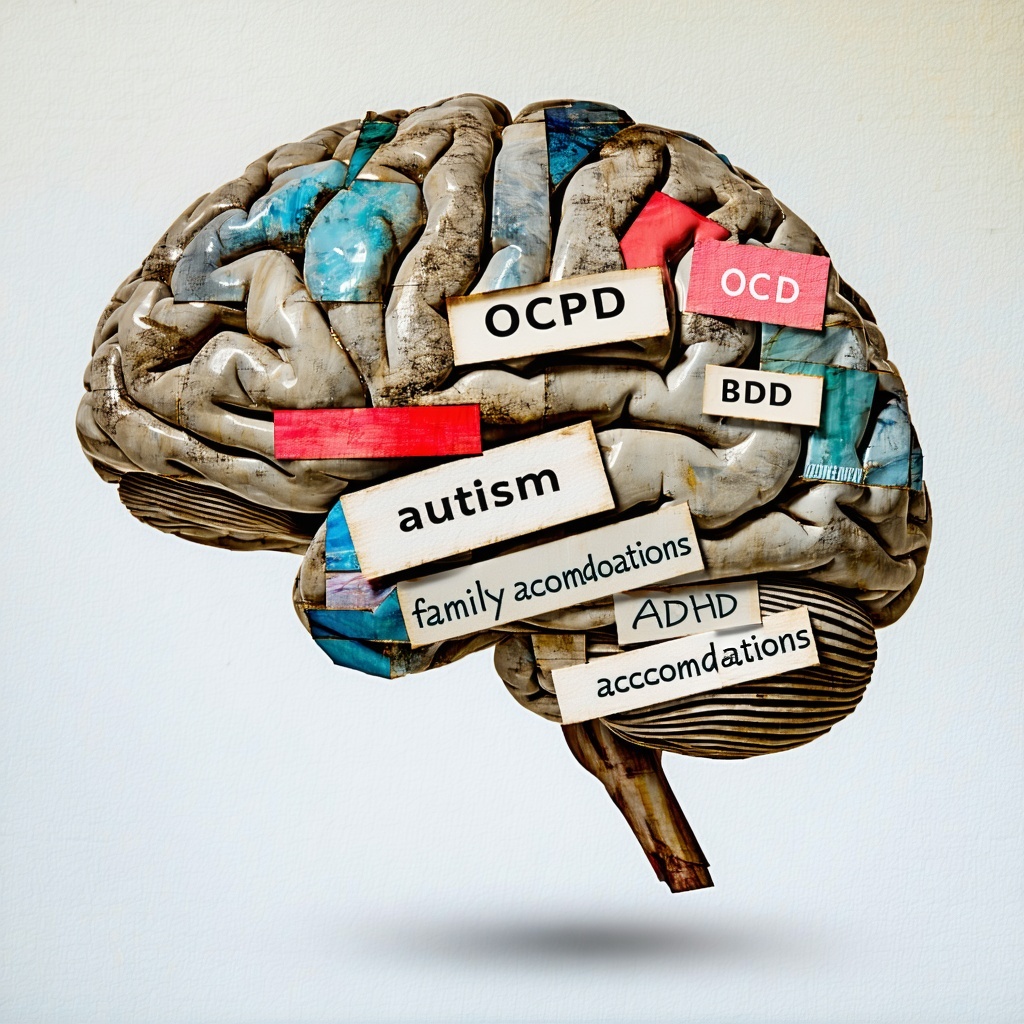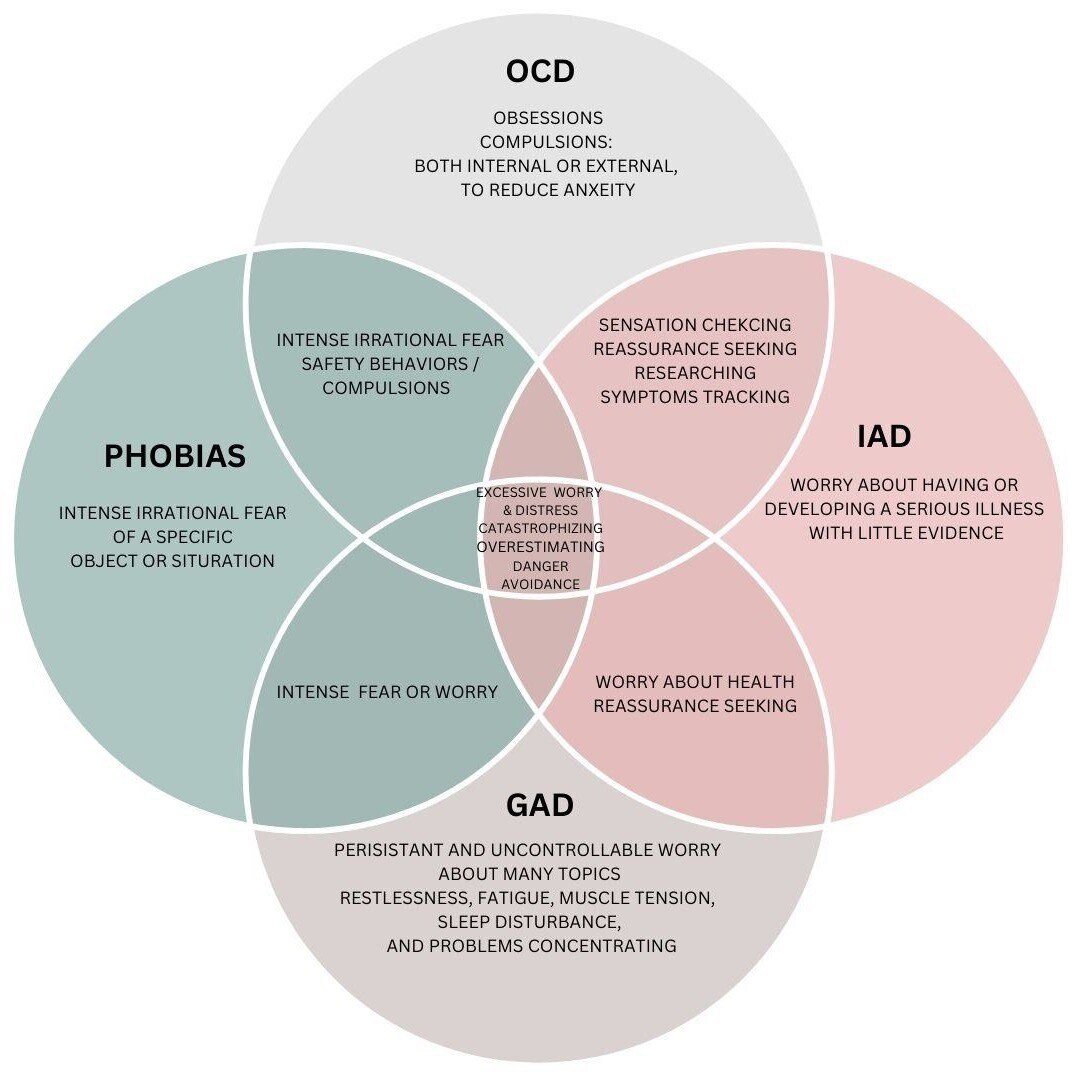ERP Therapy: Addressing OCD Misdiagnosis and Treatment
Obsessive-Compulsive Disorder (OCD) is characterized by persistent, unwanted obsessions and repetitive compulsions. According to the Diagnostic and...
5 min read
KD HOLMES, LPC, EMDR CERTIFIED, BTTI TRAINED
:
Jul 19, 2025 4:28:38 PM

OCD is rarely straightforward. It doesn’t exist in a vacuum, and in many cases, it shows up tangled in a web of other diagnoses-each influencing, masking, or amplifying the core symptoms of obsessive-compulsive disorder. If you've ever worked with clients who seem resistant to ERP, who present with emotional dysregulation , cognitive inflexibility, or chaotic relationships, you’ve likely encountered this kind of complexity.
We can’t treat complex OCD effectively without widening our lens. This means understanding trauma history, personality structure, neurodivergent traits, and the client's relational ecosystem. It means building flexible, integrative treatment approaches that hold both the science of ERP and the art of adaptation. In this blog, we explore five common dual diagnoses-PTSD, OCPD, BPD, ADHD, and Adult diagnosed Autism-and name some treatment barriers that so often go unspoken.
The overlap between trauma and OCD is significant and often missed or misdiagnosed as PTSD. These clients may present with distressing intrusive thoughts and images, compulsive behaviors, and a need for control-all of which look like a trauma response but is actually OCD. Or maybe you think it's just classic OCD but when you dig deeper, you’ll often find early experiences of chaos, neglect, or harm. Repetitive behaviors can emerge not just from obsessional fear but as strategies to reduce hyperarousal or re-establish predictability in a nervous system shaped by trauma. So which came first the chicken or the egg, this is something my crystal ball cannot tell but I can look at both OCD and PTSD diagnoses congruently to provide effective care.
Trauma work and trauma models falls short of effectively treating these populations and standard ERP often falls short as well. Clients may shut down, dissociate, or become flooded during ERP. When we expose, we need to remain open to trauma informed therapy tools. Leaning into ERP to create a solid treatment foundation and understanding of OCD and ERP followed by trauma treatments like EMDR or DBR or done congruently with ERP. These clients don’t need a softer approach-they need time to create new learning. Slow and steady wins the race.
Clients with OCPD are not just anxious-they’re moralistic, rigid, and deeply uncomfortable with uncertainty. While OCD brings ego-dystonic symptoms ("I hate that I think this way"), OCPD often brings ego-syntonic traits ("this is the right way to think").
This creates enormous barriers to ERP. Asking a client to resist a compulsion when their internal compass says the compulsion is necessary or virtuous can feel like asking them to violate their own integrity. In these cases, trust must be built along with time to provide lots of psychoeducation to precede exposure work. Targeting core beliefs around control, competence, and failure can begin to soften the rigidity while we touch the exposure hierarchy.
For clients with BPD, the obsessive fear of abandonment may take the form of compulsive texting, rumination, or reassurance-seeking. Their reactivity can create ruptures in the therapeutic relationship-one week they’re showing up and doing the work, the next they’re ghosting you. These clients benefit from DBT-informed strategies. Without emotional regulation and structure, ERP won’t stick.
Here’s where it gets really complicated. Many clients with OCD also live with emotional dysregulation or executive function challenges as in ADHD. This brings their own set of barriers-along with showing up under recognized, especially in women and marginalized populations.
ADHD brings impulsivity, distractibility, difficulty following through. These clients may be eager but inconsistent. They may lose their homework, forget to do exposures, or jump from one compulsion to the next. They often blame themselves. We need to stop blaming them. Instead, we build external structure, use accountability tools, and sometimes incorporate coaching or medication to scaffold the work.
When Autism and OCD intersect, treatment demands both precision and nuance. Obsessions may center around sameness, routines, or sensory discomforts, blurring the line between autistic traits and compulsive behaviors. Traditional ERP must be adapted with a neurodivergent lens-prioritizing clarity, predictability, and consent throughout the process. It’s not about eliminating stimming or special interests, but rather targeting the distress-driven rituals that impair functioning. Treatment begins by disentangling what is protective from what is imprisoning. Structured, visually supported hierarchies, collaborative pacing, and an emphasis on self-advocacy allow ERP to work with the Autistic nervous system, not against it.
Many of the clients I’ve worked with didn’t walk in the door ready to do ERP. Many were ambivalent-even terrified. They’ve lived with shame for years. They’ve convinced themselves they should “handle it alone.” Some fear judgment from their providers, especially when their obsessions center around taboo content like harm, sex, or religion.
This is where psychoeducation becomes part of the treatment. Normalizing symptoms. Explaining how OCD functions. Giving them language for what they’ve been experiencing in isolation for years. Motivational interviewing can also help clarify their values and build alignment between what they want and what it will take to get there.
Insight varies across OCD presentations. Youth in particular often see their compulsions as completely reasonable-especially in contamination, symmetry, or checking subtypes. They’re not distressed by the rituals; they’re distressed when they can’t do them.
In adults, poor insight is often entangled with OCPD traits. The compulsion becomes a character trait, a point of pride, or a necessary strategy. When clients don’t view their behaviors as problematic, treatment engagement becomes a different kind of work: not just symptom reduction, but belief examination. Not just exposure, but identity renegotiation.
Family dynamics play a huge role in how OCD evolves-and how it is treated. Parents, partners, or siblings often reinforce compulsions unintentionally. They offer repeated reassurance, avoid known triggers, or participate in rituals in an effort to reduce distress. The result? Immediate relief, long-term maintenance of the disorder.
Addressing family accommodation is delicate work. It requires compassion for everyone involved. I often bring family members into sessions to educate them on how avoidance and enabling sustain OCD-and to offer them alternative ways to support their loved one. Reducing accommodation is one of the most powerful predictors of treatment success.
ERP is built on confrontation. But not every culture values confrontation. Not every client sees exposure as courageous. For some, it feels disrespectful, taboo, or morally dangerous.
This is particularly true in cases of religious scrupulosity, or in collectivist cultures where maintaining harmony and privacy are prioritized over individual autonomy. Asking a client to perform an exposure that violates their cultural or spiritual values won’t just damage rapport-it may shut down treatment altogether.
We must co-create exposure hierarchies. We must be willing to listen to what the client can’t do-and why. Cultural humility isn’t a bonus here; it’s a prerequisite for ethical care.
So what do we do with all of this?
We start by acknowledging that complex OCD is not resistant-it’s layered. These clients are not “difficult”-they’re doing what they can with nervous systems shaped by trauma, brains wired differently, and environments that may not understand them.
Building trust alongside ERP principals creates powerful rapport and will be needed for the ERP journey ahead.
Effective treatment for complex OCD includes:
Integrated interventions that combine ERP with trauma work, emotion regulation strategies, or ADHD coaching
Insight-oriented techniques like values clarification, and motivational scripts
Family involvement that reduces accommodation and builds support
Culturally responsive ERP that honors identity, faith, and tradition
And most of all, it requires us to stay flexible. To notice when a protocol isn’t landing. To ask more questions. To adapt without abandoning what we know works.
There is no single roadmap for treating OCD-especially when it shows up with layers of trauma, neurodivergence, and relational complexity. But what we do have are tools that, when used thoughtfully, can shift the course of someone’s life.
This work requires more than technical knowledge. It requires attunement. It requires cultural humility. It requires a willingness to sit with discomfort-ours and our clients’. And it requires patience. Because some clients won’t respond in ten sessions. Some will drop out and come back. Some will fight every step until they start to feel safety again in their own bodies.
But when they do? The change is real. It’s deep. And it reminds us why we do this work in the first place.
https://pmc.ncbi.nlm.nih.gov/articles/PMC7176075/
https://pmc.ncbi.nlm.nih.gov/articles/PMC10080192/
https://pmc.ncbi.nlm.nih.gov/articles/PMC10187387/

Obsessive-Compulsive Disorder (OCD) is characterized by persistent, unwanted obsessions and repetitive compulsions. According to the Diagnostic and...

There’s a particular kind of quiet that settles over the room when a client understands ERP and agrees to an exposure for the first time. It’s not...

For therapists, grasping the nuanced distinctions between OCD and other anxiety disorders is vital for accurate diagnosis, leading to the most...